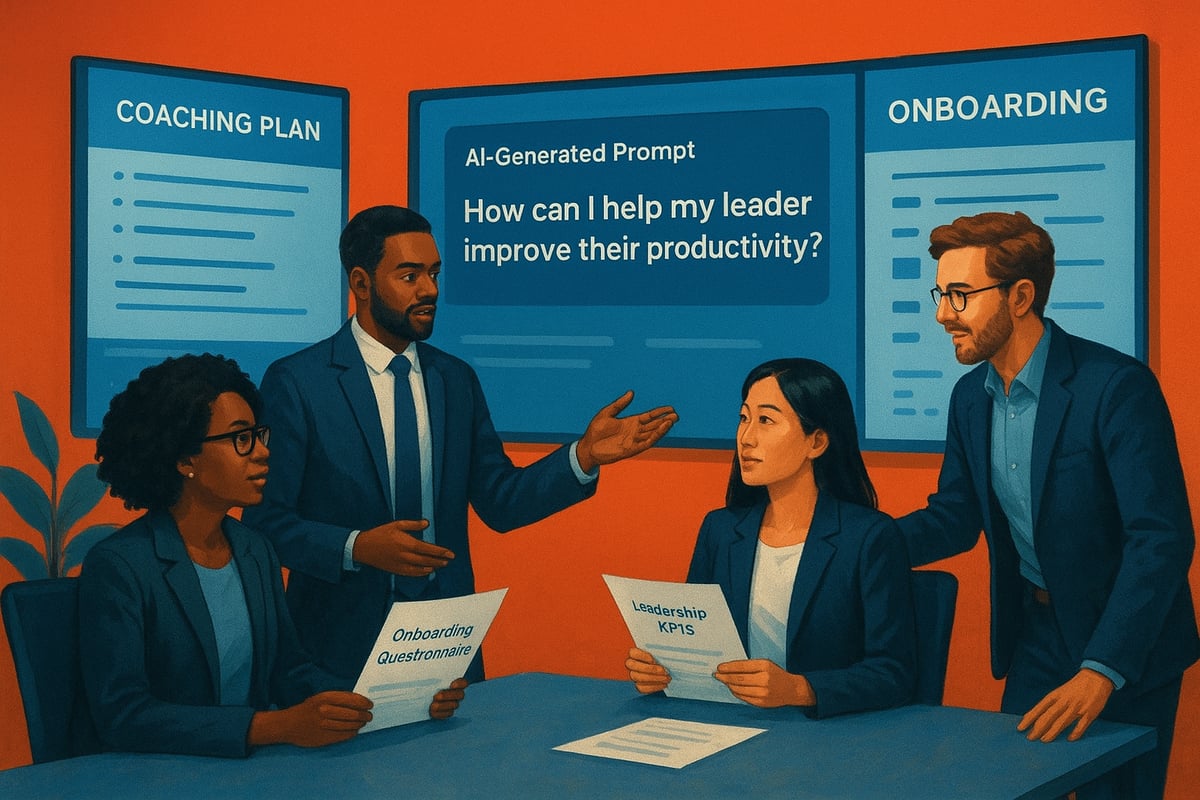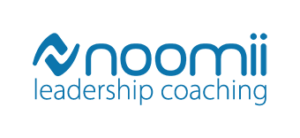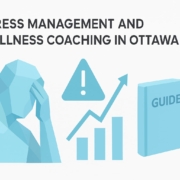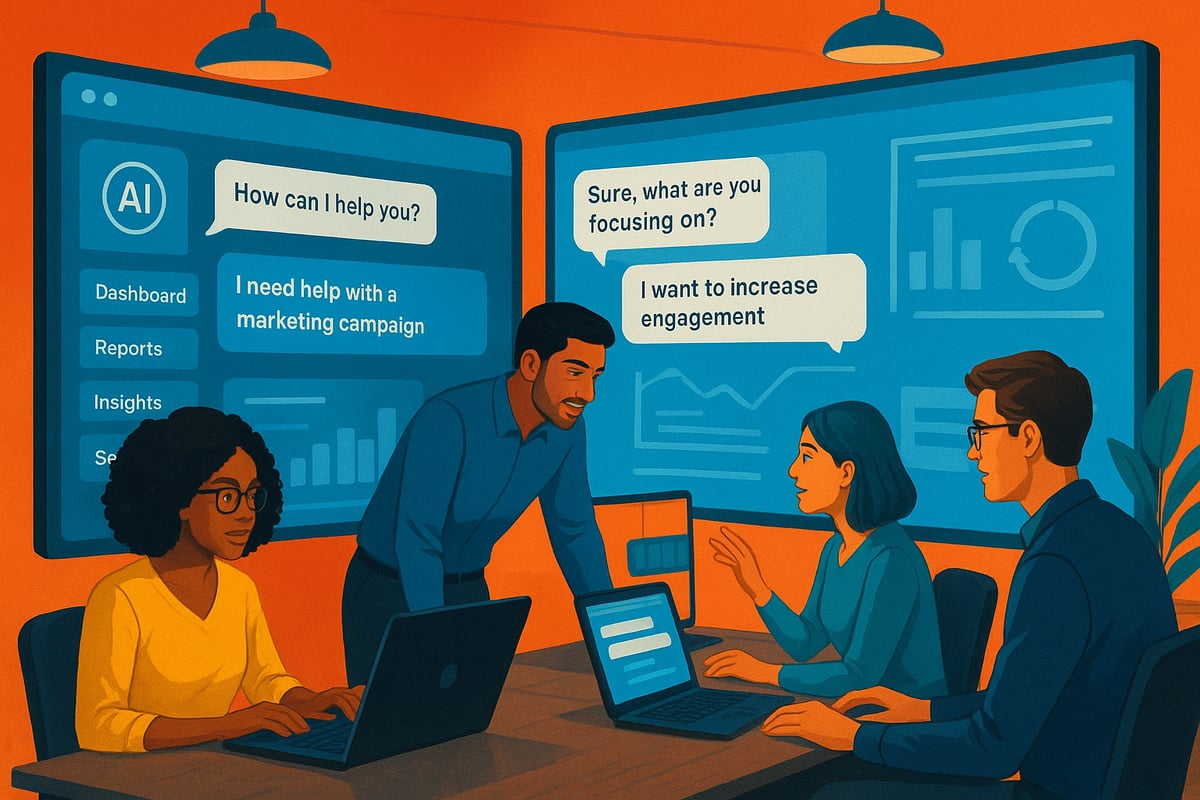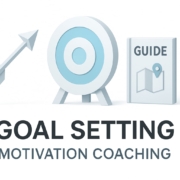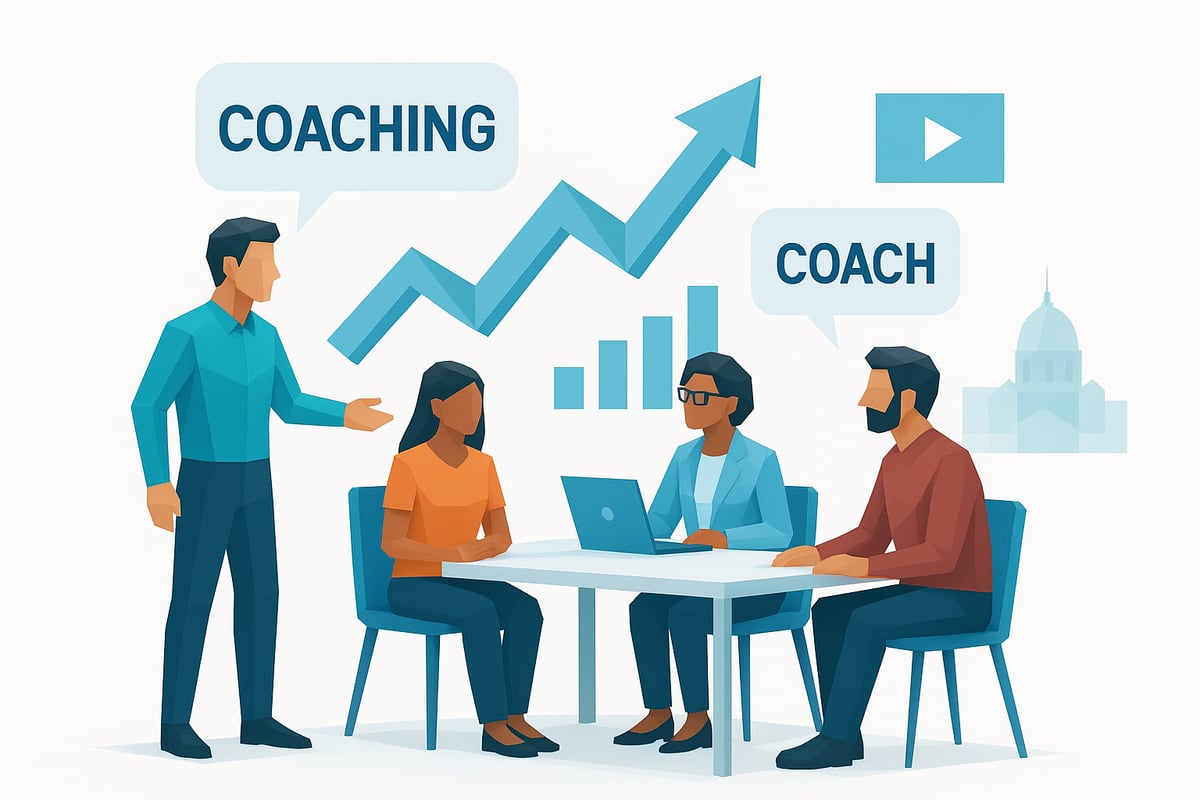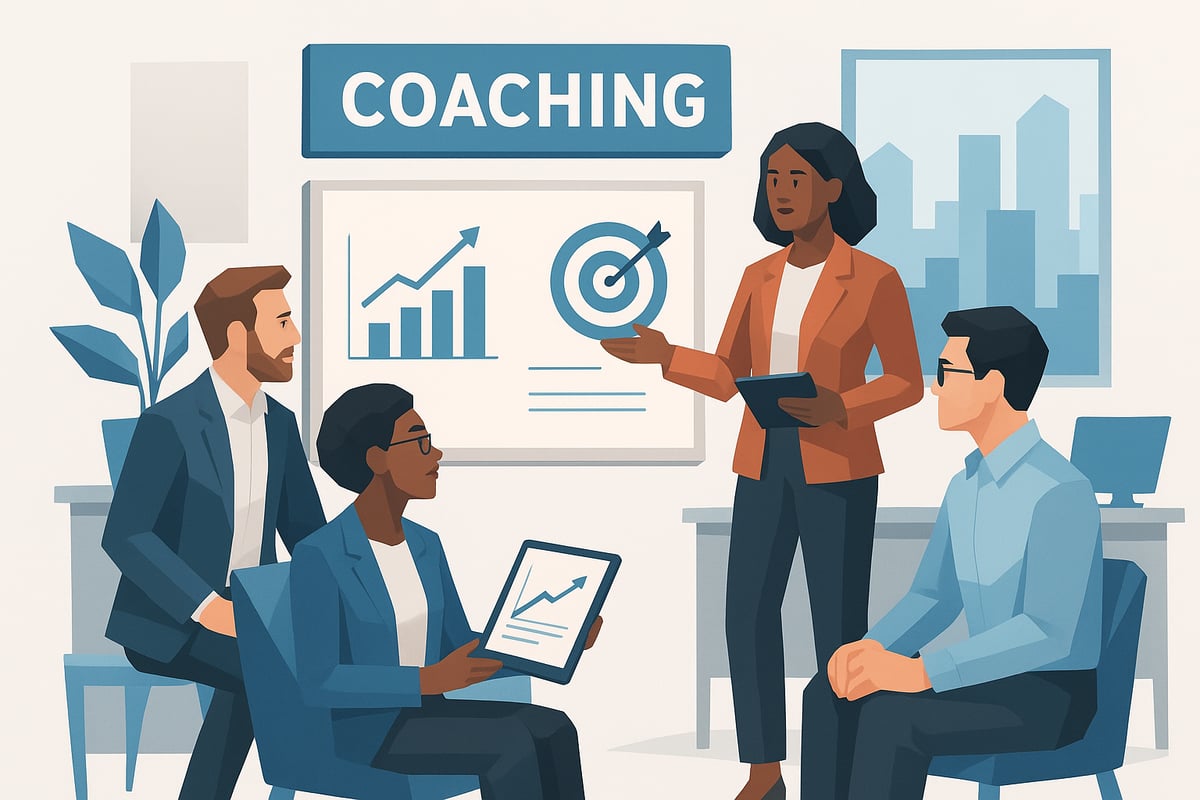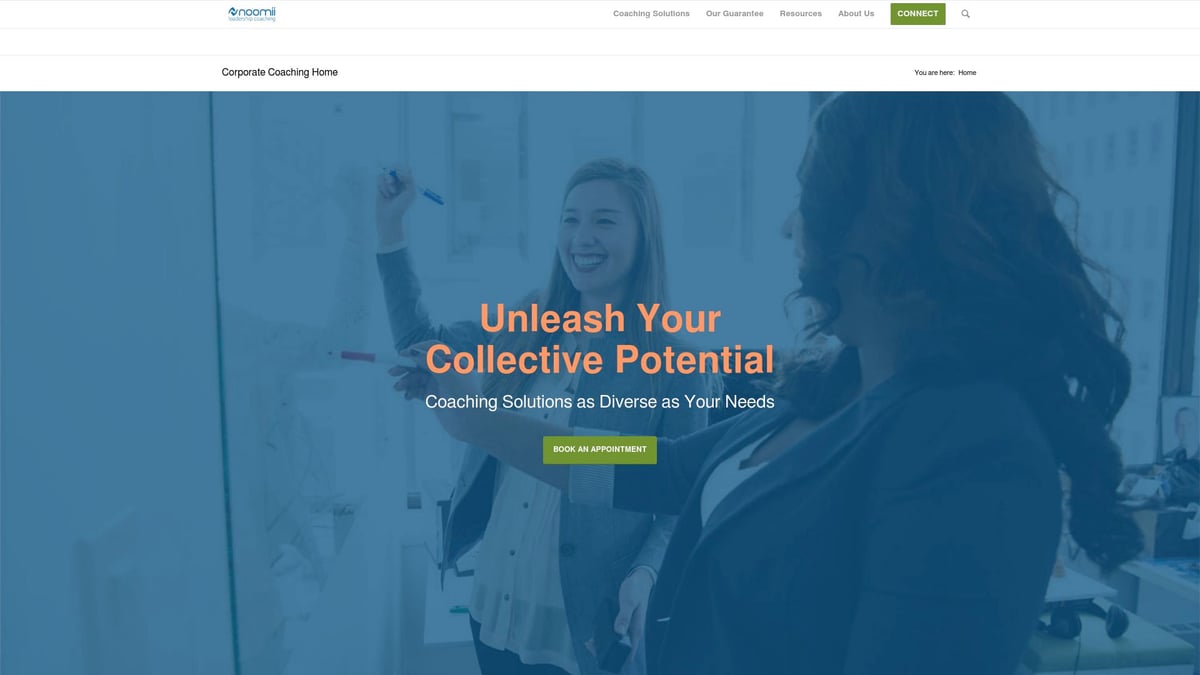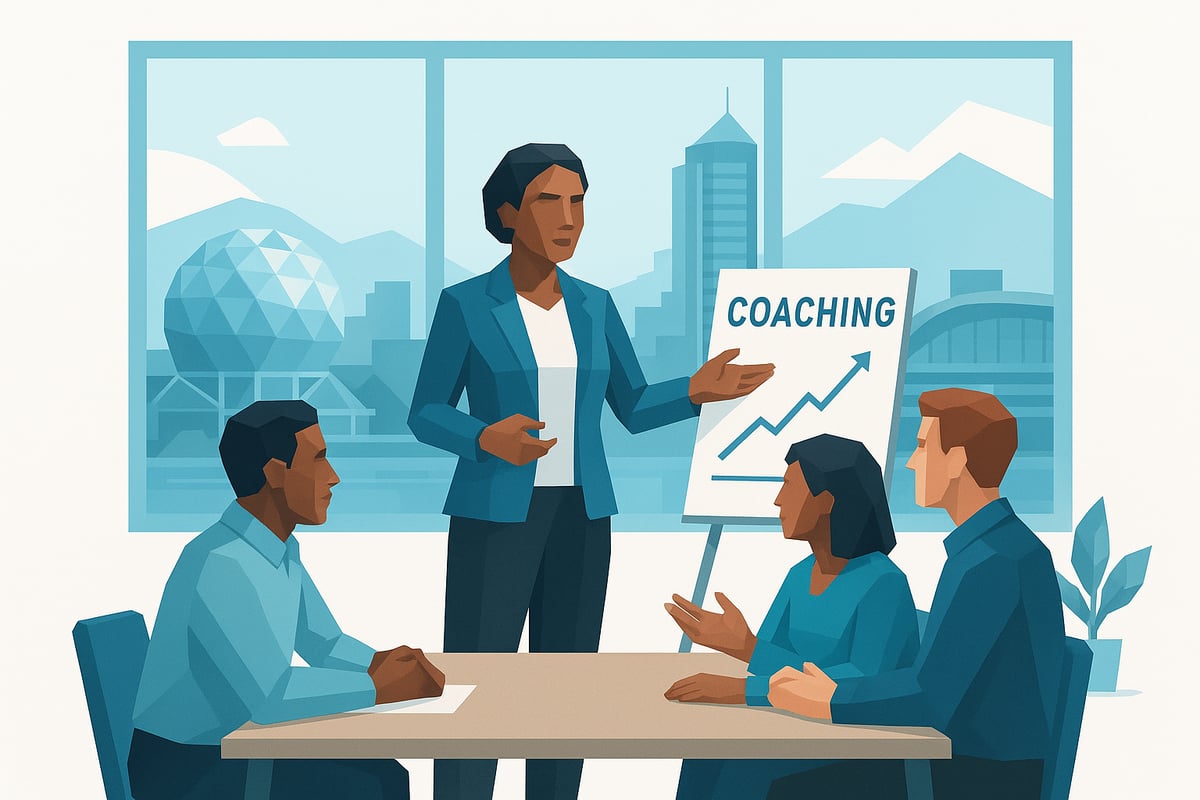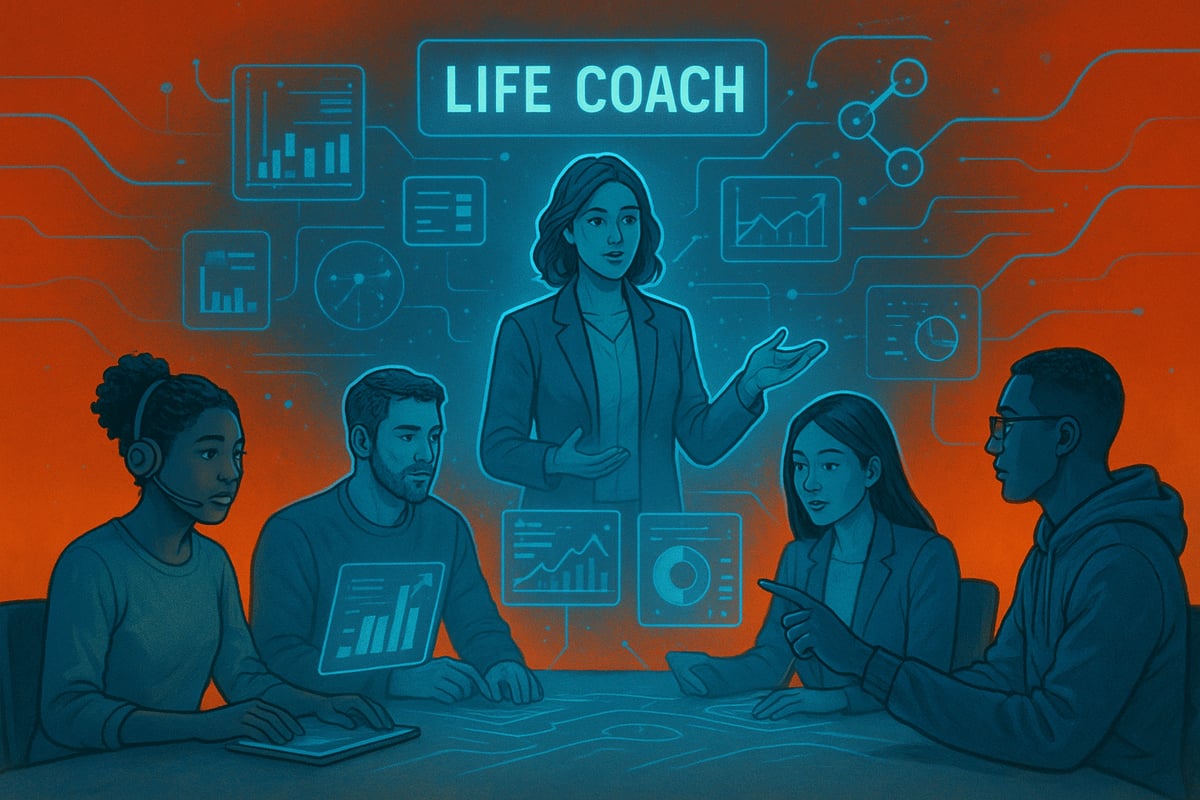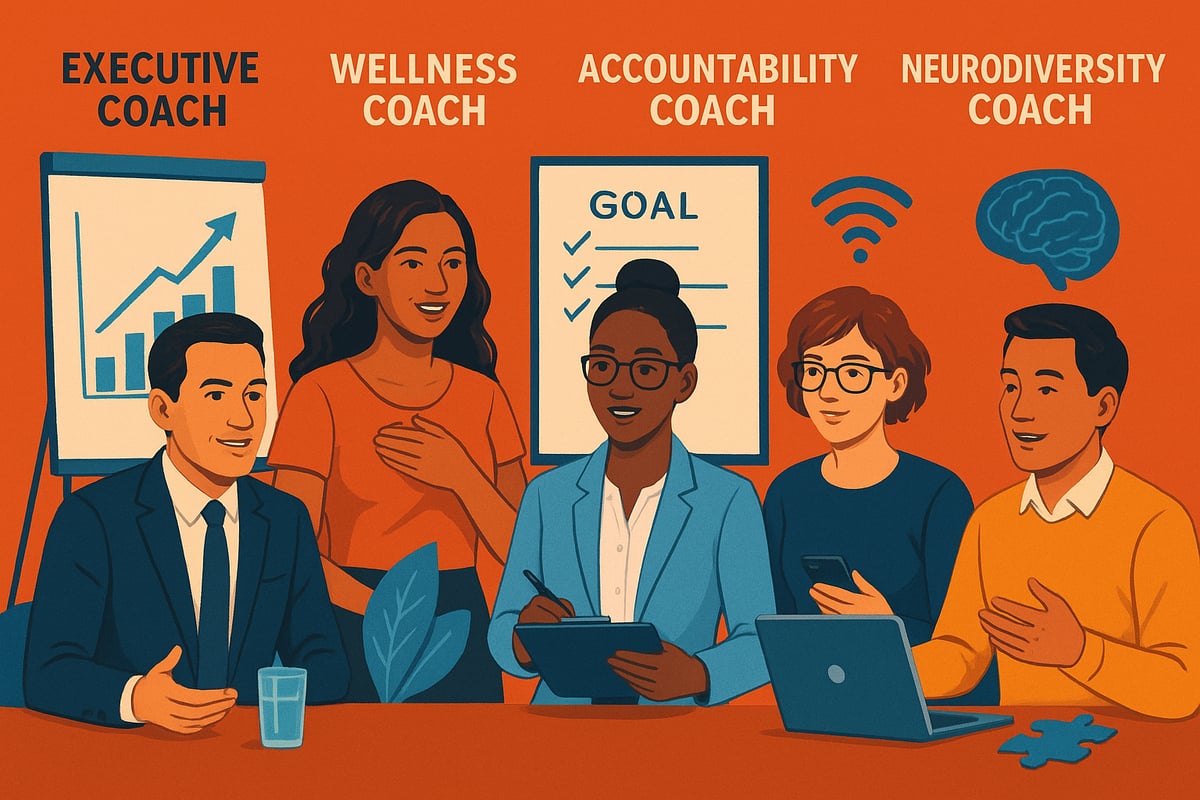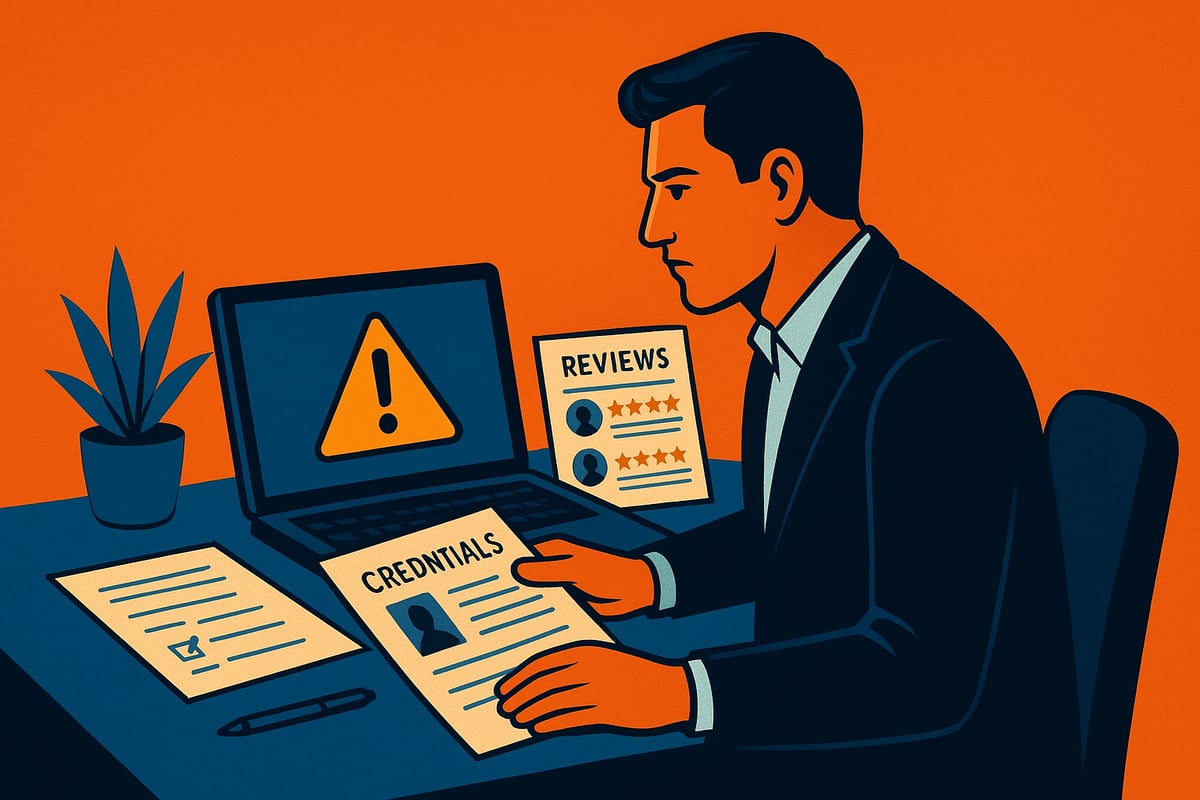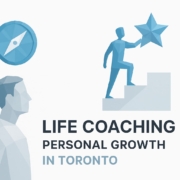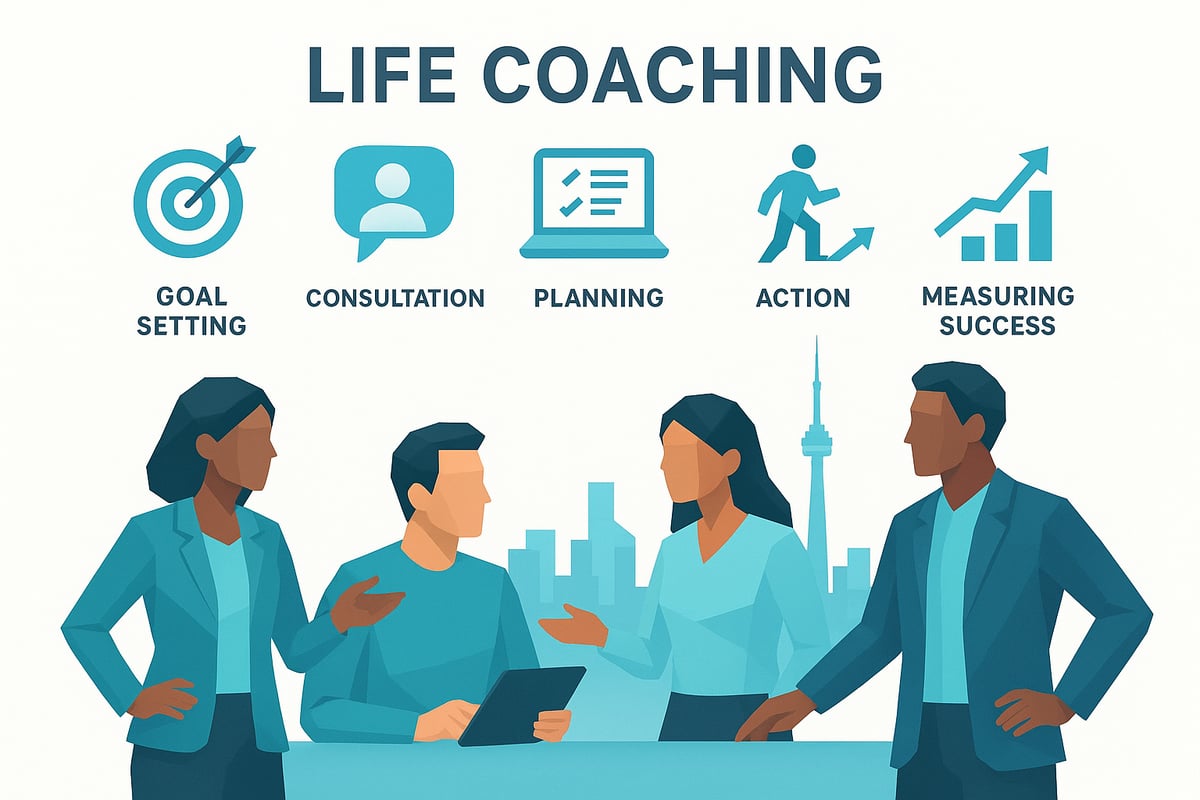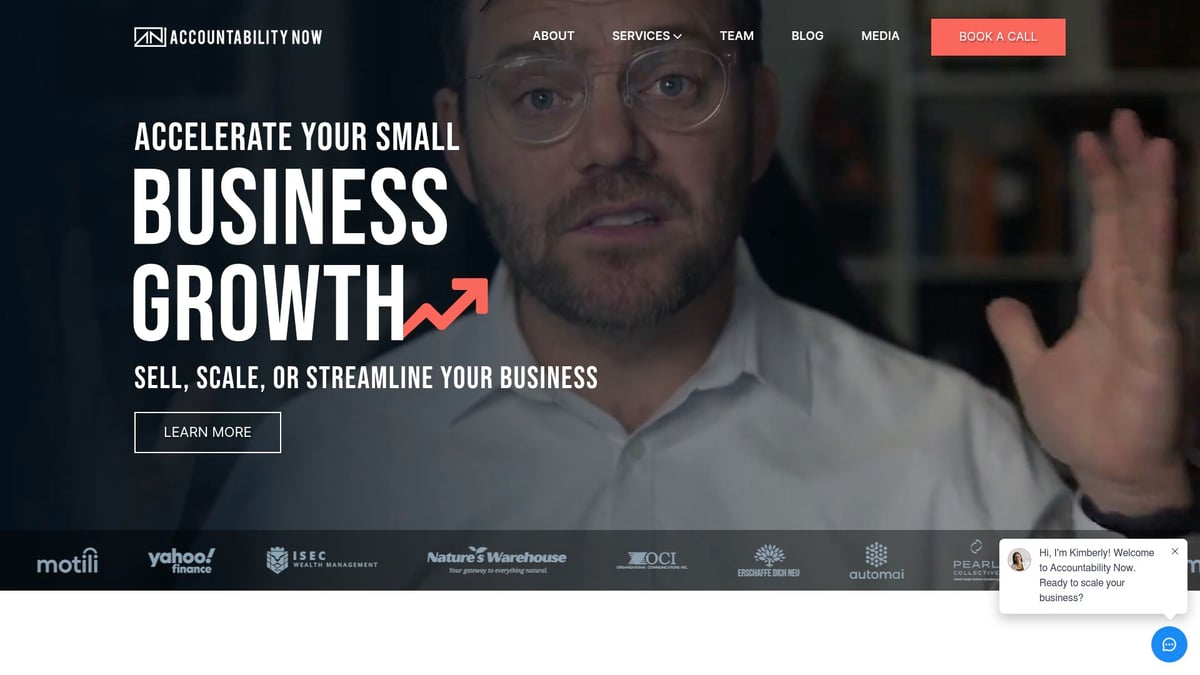Stress levels among Ottawa’s residents and professionals are at an all-time high in 2026, with new research revealing significant increases in anxiety and burnout across the city. If you are seeking practical solutions, this guide to stress management and wellness coaching in Ottawa is your essential resource. Discover the science behind stress, learn the benefits of coaching, explore local trends, and gain actionable strategies for sustainable well-being. Take the first step toward improved health and resilience—explore our expert insights and, for added accountability in your wellness journey, visit Accountability Now.
Understanding Stress in Ottawa: Trends and Challenges

The Science of Stress: What Happens in the Body and Mind
Stress is a natural response, but the difference between acute and chronic stress shapes its impact on the body and mind. Acute stress is short-lived, often triggered by immediate demands or challenges. The body releases adrenaline and cortisol, sharpening focus and energy for a short period.
Chronic stress is persistent, with the body remaining in a heightened state for weeks or months. This constant activation strains the cardiovascular system, suppresses the immune response, and impairs cognitive function. In 2026, research into urban Canadian populations found that over 70% of adults in major cities experience symptoms of chronic stress, a figure that has climbed sharply in the past two years.
Ottawa professionals and students report some of the highest stress levels in the country. According to local surveys, nearly 65% of Ottawa workers cite work-life balance and housing affordability as top stressors. Students face mounting academic pressures and uncertainty about future opportunities.
Here are the most common stressors identified in Ottawa:
- Rising housing costs and economic volatility
- Demanding work expectations, especially in government and tech
- Adapting to rapid changes in remote and hybrid work models
- Social isolation and reduced access to community resources
Chronic stress in Ottawa leads to significant mental health consequences, including anxiety, professional burnout, and reduced productivity. Physically, individuals face increased risks of heart disease, hypertension, and frequent illness.
A recent case study from a major Ottawa tech firm revealed that unmanaged stress contributed to high employee turnover, with many citing lack of support and overwhelming workloads. This example underscores the urgent need for stress management and wellness coaching in ottawa.
For additional insights into the unique challenges faced by Ottawa’s federal workforce, see Rising stress among Canadian federal employees.
Ottawa’s Unique Stress Landscape
Ottawa’s stress landscape is shaped by its distinctive mix of government and technology sectors. Many residents work in high-stakes environments, where job security is coupled with immense responsibility. The shift to remote and hybrid work after the pandemic has changed daily routines, blurring boundaries between work and personal life.
Cultural diversity is another defining factor. Ottawa’s multicultural population brings a variety of coping mechanisms, but also unique challenges in accessing mental health resources tailored to different backgrounds. Community support systems exist, but gaps remain, especially in underserved neighborhoods.
The demand for stress management and wellness coaching in ottawa is further amplified by limited public mental health resources. Wait times for counseling and therapy often exceed national averages, pushing individuals and organizations to seek alternative solutions.
Comparing Ottawa to other Canadian cities, it consistently ranks among the top five for reported stress levels, particularly in the workplace. Data from 2026 shows Ottawa’s professionals are more likely to report feelings of overwhelm and burnout compared to peers in Toronto or Vancouver.
Understanding these local trends is crucial. Only by addressing the root causes—unique to Ottawa’s economy, culture, and work environment—can effective strategies for stress management and wellness coaching in ottawa be developed. This knowledge empowers both individuals and organizations to take proactive steps toward a healthier, more resilient community.
What Is Wellness Coaching? Principles, Methods, and Benefits
Stress management and wellness coaching in ottawa is gaining traction as more residents and organizations realize the need for sustainable mental and physical well-being. But what exactly is wellness coaching, and how does it differ from other support services? Let's break down the principles, methods, and concrete benefits you can expect from working with a certified wellness coach in Ottawa.

Defining Wellness Coaching: Core Concepts
At its core, stress management and wellness coaching in ottawa is a collaborative, client-centered process designed to help individuals and groups achieve their personal and professional wellness goals. Unlike therapy or counseling, which often focus on diagnosing and treating mental health conditions, wellness coaching is future-oriented and emphasizes skill-building, accountability, and positive change.
Certified wellness coaches in Ottawa use evidence-based models such as the Transtheoretical Model of Change, Motivational Interviewing, and Cognitive Behavioral Coaching. These frameworks empower clients to develop self-awareness, set realistic goals, and build resilience against common stressors.
Key distinctions between wellness coaching and other forms of support include:
- Coaching: Focuses on goal setting, action planning, and accountability.
- Therapy: Addresses past trauma and mental health diagnoses.
- Counseling: Offers guidance and advice for specific challenges.
Ottawa's wellness coaches often hold certifications from reputable organizations and participate in ongoing professional development. This ensures they remain up-to-date with the latest research and best practices in stress management and wellness coaching in ottawa.
A personalized approach is at the heart of every effective coaching relationship. Coaches tailor their strategies to fit individual needs, lifestyles, and cultural backgrounds, making the process both supportive and empowering.
Benefits of Wellness Coaching for Individuals and Organizations
The impact of stress management and wellness coaching in ottawa is far-reaching, delivering measurable benefits for both individuals and organizations. For individuals, coaching fosters greater stress resilience, emotional intelligence, and overall well-being. People report enhanced clarity, improved focus, and stronger work-life integration after engaging with a skilled coach.
Organizations also see significant returns on investment. Ottawa-based businesses that invest in wellness coaching experience reduced absenteeism, lower turnover, and higher productivity. Studies indicate that for every dollar spent on coaching, companies can expect a notable improvement in employee satisfaction and performance.
Here's a quick comparison of benefits:
| Benefit Type |
Individual Impact |
Organizational Impact |
| Stress Resilience |
Better coping strategies |
Reduced burnout rates |
| Productivity |
Improved focus |
Higher team efficiency |
| Well-being |
Greater life satisfaction |
Enhanced workplace morale |
| ROI |
Personal growth |
Financial and cultural gains |
Consider the story of a local entrepreneur who, facing severe burnout, turned to stress management and wellness coaching in ottawa. With guided support, she rebuilt her boundaries, improved her sleep, and reignited her passion for her business. Within months, her energy and productivity soared, and her business saw record growth.
Coaching also supports organizational goals by creating healthier, more engaged teams. Many Ottawa companies now integrate wellness coaching into their employee assistance programs, recognizing its value in preventing stress-related issues before they escalate.
Methods and Tools Used by Ottawa-Based Coaches
The methods behind stress management and wellness coaching in ottawa are as diverse as the city itself. Coaches use a blend of mindfulness techniques, CBT-based strategies, and resilience training to help clients manage stress effectively. Ottawa's coaches also embrace digital tools and wellness apps, making support accessible and interactive for clients in 2026.
Popular methods include:
- Mindfulness and relaxation exercises: Breathing, meditation, and grounding techniques.
- Cognitive Behavioral Coaching: Identifying and reframing negative thought patterns.
- Resilience training: Building adaptability through scenario planning and self-reflection.
- Group vs. One-on-One Coaching: Group sessions foster peer support, while individual coaching offers tailored guidance.
Digital integration is a major trend, with many coaches leveraging apps that track mood, habits, and progress. Wearables now provide real-time stress data, allowing clients and coaches to adjust strategies on the fly. The rise of virtual reality for immersive stress reduction is also shaping the future of wellness coaching.
Ottawa coaches often integrate holistic lifestyle advice, including nutrition, exercise, and sleep hygiene, to address all aspects of well-being. For more on how technology is transforming the field, see the latest Health & Wellness coaching market trends.
To boost your results from stress management and wellness coaching in ottawa, consider building personal accountability into your wellness journey. For actionable strategies, visit Accountability Now.
The Ottawa Wellness Coaching Scene: Trends, Providers, and Innovations
Ottawa’s landscape for stress management and wellness coaching in ottawa is rapidly transforming. As residents and organizations increasingly recognize the impact of chronic stress, the city has seen a surge in innovative coaching solutions tailored to its unique workforce and cultural diversity. Let’s explore the latest trends, leading providers, and technological breakthroughs shaping the local wellness scene.

Key Trends in Ottawa’s Wellness Coaching Industry
The demand for stress management and wellness coaching in ottawa has grown significantly since 2020. Virtual and hybrid coaching services now dominate the market, making support accessible to professionals, students, and families balancing busy schedules. Specialized coaching niches have emerged, ranging from workplace wellness programs to youth and family stress interventions.
Integration with healthcare providers and Employee Assistance Programs (EAPs) is another defining trend. Many Ottawa businesses now offer wellness coaching as part of comprehensive benefits packages, targeting stress reduction, productivity, and mental health. Recent data projects the local wellness coaching market to expand by over 25 percent through 2026, outpacing national averages.
A comparison of market trends:
| Trend |
2023 |
2026 (Projected) |
| Virtual Coaching Adoption |
60 percent |
85 percent |
| Workplace Wellness Programs |
40 percent |
70 percent |
| Market Growth |
18 percent |
25 percent |
As the need for stress management and wellness coaching in ottawa continues, expect even more tailored approaches for diverse communities and sectors.
Leading Providers and Community Initiatives
Ottawa’s top-rated wellness coaching practices blend personalized care with evidence-based strategies. Many providers specialize in organizational wellness, youth mental health, and multicultural approaches, reflecting the city’s vibrant diversity. Community programs and non-profit initiatives are also essential pillars, offering affordable or free access to stress management resources for underserved groups.
The Ottawa Heart Institute’s stress management workshop is a notable example, delivering science-backed techniques to help residents manage stress and improve cardiovascular health. Local government partnerships with coaching organizations have expanded access for municipal employees, supporting healthier workplaces and reducing absenteeism.
Key community initiatives include:
- Peer support groups for first responders
- Non-profit youth resilience workshops
- Multilingual wellness coaching for newcomers
As awareness of stress management and wellness coaching in ottawa grows, these providers and initiatives are pivotal in bridging gaps and driving positive change.
Innovations and Technology in Wellness Coaching
Technological innovation is revolutionizing stress management and wellness coaching in ottawa. AI-driven assessment tools now personalize coaching plans, analyzing client data for tailored recommendations. Wearable devices monitor real-time stress markers, helping clients and coaches track progress and adjust strategies.
Virtual reality (VR) is another breakthrough, offering immersive environments for relaxation and mindfulness training. Many Ottawa-based coaches use digital platforms to deliver video sessions, track goals, and facilitate group workshops. These advances empower individuals and organizations to take a proactive, data-driven approach to their well-being.
For those seeking to cultivate personal accountability and sustain wellness improvements, exploring resources like Accountability Now can provide valuable strategies to complement local coaching and technology solutions.
Steps to Effective Stress Management: A Chronological Guide
Managing stress in Ottawa’s fast-paced environment requires more than quick fixes. By following a clear, step-by-step approach, individuals and organizations can transform their relationship with stress and achieve lasting well-being. This chronological guide breaks down the essential actions for effective stress management and wellness coaching in ottawa, empowering you to take control of your mental health journey.
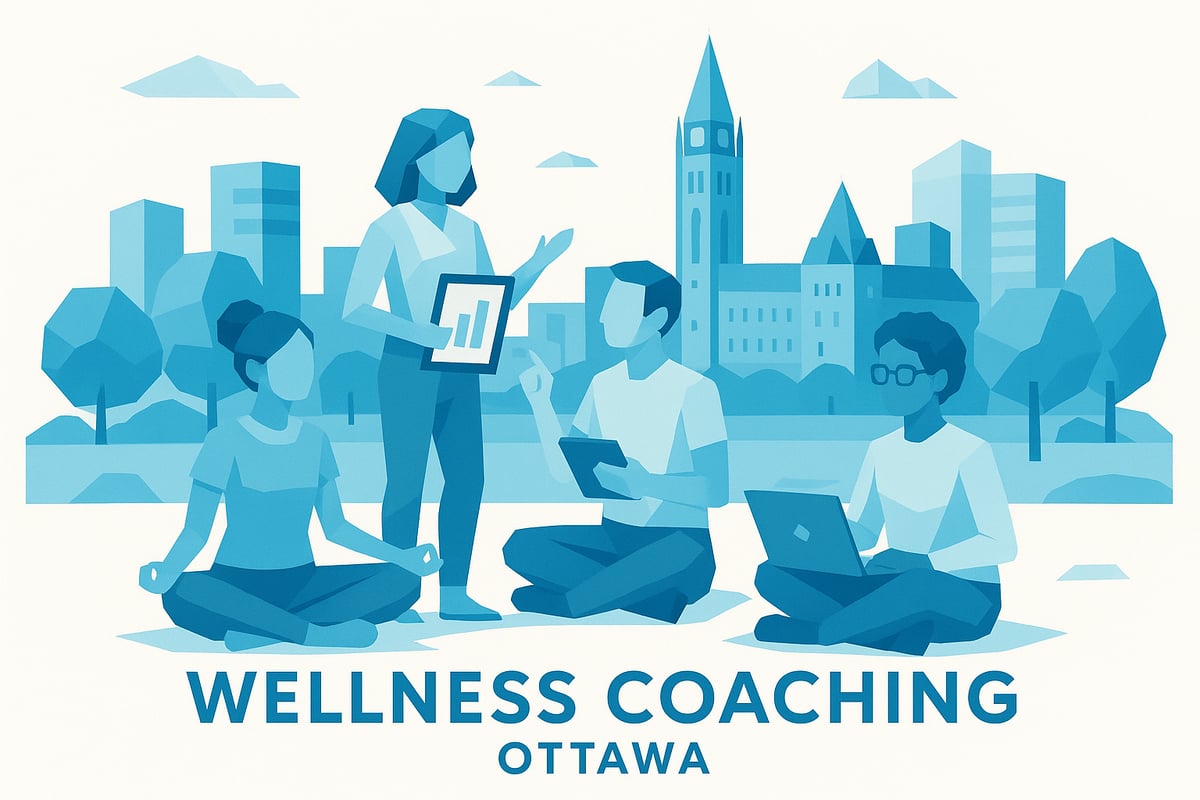
Step 1: Recognize and Assess Your Stressors
Awareness is the cornerstone of stress management and wellness coaching in ottawa. Start by identifying your unique stress triggers, whether they stem from work, relationships, or urban living. Ottawa-based professionals often face pressures related to housing, job security, and demanding workloads.
Use self-assessment tools such as the Perceived Stress Scale or digital stress inventories. Many workplaces and schools in Ottawa have adopted screening programs that help employees and students gauge their stress levels. These assessments offer a baseline and reveal patterns you might otherwise miss.
- Common Ottawa stressors include:
- Rising cost of living
- Remote work challenges
- Balancing multicultural family expectations
Recognizing these factors is the first step toward meaningful change.
Step 2: Set Realistic Wellness Goals
Effective stress management and wellness coaching in ottawa centers on setting achievable, motivating goals. Certified coaches use the SMART framework (Specific, Measurable, Achievable, Relevant, Time-bound) to help clients clarify what success looks like.
For example, instead of simply aiming to "reduce stress," an Ottawa resident may set a goal to "practice guided meditation three times a week for 15 minutes." Coaches in the city often utilize digital platforms to track these goals, providing reminders and progress updates.
| Goal Type |
Example for Ottawa Resident |
| Specific |
Meditate 3x/week |
| Measurable |
Log sessions in wellness app |
| Achievable |
Start with 5-minute meditations |
| Relevant |
Tailored to work-life balance |
| Time-bound |
Review progress every month |
Setting realistic goals makes the process manageable and boosts motivation.
Step 3: Develop Personalized Coping Strategies
No two individuals experience stress the same way, making personalization critical for stress management and wellness coaching in ottawa. Local coaches blend evidence-based techniques with cultural sensitivity to address diverse needs.
Popular strategies include:
- Mindfulness meditation and breathing exercises
- Cognitive-behavioral techniques for reframing negative thoughts
- Time management tools suited to Ottawa’s hybrid work culture
Ottawa’s multicultural landscape means coping strategies must respect different backgrounds. Coaches collaborate with clients to adapt techniques, ensuring they fit with personal values, family structures, and daily routines.
Step 4: Build Support Networks
Support is a powerful buffer against stress. In Ottawa, leveraging community resources and peer groups is integral to stress management and wellness coaching in ottawa. Coaches encourage clients to cultivate connections at home, in the workplace, and through local organizations.
Key support options:
- Family and friends: Regular check-ins and shared activities
- Professional coaches: Structured guidance and accountability
- Community groups: Ottawa-based wellness meetups and multicultural support circles
Building a network reduces isolation and increases resilience, especially during periods of high stress.
Step 5: Implement and Monitor Progress
Putting your plan into action is where transformation happens. Stress management and wellness coaching in ottawa emphasizes regular implementation and honest self-monitoring. Coaches schedule frequent check-ins to celebrate wins and address setbacks.
Digital wellness apps are widely used in Ottawa to track mood, sleep, and stress levels. These tools provide real-time feedback, making it easier to stay on track. Monitoring progress also allows for timely adjustments, maximizing the effectiveness of your wellness program.
Accountability is crucial at this stage. Many Ottawa organizations use structured follow-ups and peer accountability groups to keep participants engaged and motivated.
Step 6: Adjust and Sustain Long-Term Wellness
Lasting change requires flexibility and perseverance. Stress management and wellness coaching in ottawa teaches clients to anticipate setbacks and treat them as learning opportunities. If a strategy stops working, coaches help you pivot and find new solutions.
For instance, an Ottawa resident who initially relied on group activities for stress relief may switch to solo mindfulness practices during busy periods. The key is to reassess, adjust, and maintain motivation over time.
To build personal accountability into your wellness journey and discover more strategies for sustaining long-term progress, visit Accountability Now. Consistent reflection and adaptation ensure that your commitment to well-being endures, no matter what challenges arise.
How to Choose the Right Stress Management and Wellness Coach in Ottawa
Finding the right expert for stress management and wellness coaching in ottawa can transform your well-being journey. With many options available, it is crucial to consider several factors to ensure you receive personalized, effective support. Let’s break down what to look for so you can make a confident, informed decision.
Credentials and Qualifications to Look For
Start your search by verifying the coach’s credentials. In stress management and wellness coaching in ottawa, reputable coaches hold certifications from recognized organizations such as the International Coach Federation (ICF) or the Canadian Health Coach Alliance. These credentials ensure your coach follows ethical guidelines and professional standards.
Look for coaches who have experience working with your specific stressors, whether they relate to workplace burnout, life transitions, or family dynamics. Professional associations, ongoing training, and specialized certifications in wellness or stress management signal a commitment to best practices.
Assessing Coaching Styles and Philosophies
Coaching is not one-size-fits-all. The most successful stress management and wellness coaching in ottawa matches your learning style and personal preferences. Some coaches use structured, evidence-based methods, while others take a holistic or intuitive approach.
Before committing, request an initial consultation or trial session. This is your opportunity to ask about their process, values, and communication style. If you are unsure which specialty fits your needs, explore the different types of life coaches available. This resource can help you decide whether you need support with career growth, health, or emotional resilience.
Evaluating Client Success Stories and Reviews
Authentic testimonials and success stories provide insight into a coach’s effectiveness. When researching stress management and wellness coaching in ottawa, read client reviews on reputable directories, the coach’s website, or independent platforms.
Look for stories that reflect your goals, such as overcoming workplace stress or achieving lasting work-life balance. High satisfaction rates and positive outcomes, especially with clients facing similar challenges, can signal a strong fit. Do not hesitate to ask potential coaches for references or case studies during your selection process.
Practical Considerations: Pricing, Accessibility, and Cultural Fit
Finally, make sure the logistics of stress management and wellness coaching in ottawa work for you. Pricing varies widely, so review average costs for coaching in the city using resources like life coaching cost in Ottawa. This will help you set realistic expectations and budget accordingly.
Consider whether you prefer virtual or in-person sessions, and check the coach’s availability. Inclusivity matters, so choose someone who understands your cultural background and unique needs. For more guidance on building accountability into your wellness journey, visit Accountability Now.
Frequently Asked Questions About Stress Management and Wellness Coaching
What is the difference between stress management and wellness coaching?
Stress management and wellness coaching in ottawa are often mentioned together, but they serve distinct functions. Stress management focuses on immediate tools and strategies to cope with specific stressors, such as breathing techniques, time management, and relaxation exercises.
Wellness coaching, on the other hand, takes a broader approach. It helps clients set long-term goals for overall well-being, including physical, emotional, and mental health. Coaches use evidence-based models to empower individuals to build resilience and sustainable habits. In ottawa, certified wellness coaches tailor their methods to the unique stress profiles of residents, integrating both stress management and holistic wellness.
How effective is wellness coaching for managing chronic stress?
Wellness coaching is highly effective for chronic stress, especially when delivered by certified professionals in ottawa. Chronic stress impacts the body and mind over time, leading to burnout, anxiety, and health issues. Coaches work collaboratively to identify triggers, set realistic goals, and develop coping mechanisms.
Research in 2026 shows that stress management and wellness coaching in ottawa can reduce chronic stress symptoms, improve emotional intelligence, and boost productivity. Personalized strategies, combined with regular check-ins, lead to lasting behavioral change and better overall quality of life.
What should I look for when choosing a wellness coach in Ottawa?
Selecting the right provider for stress management and wellness coaching in ottawa involves several factors. Look for certifications from recognized organizations, such as ICF or CCPA. Experience with issues similar to yours, such as workplace stress or family dynamics, is essential.
Consider the coach’s philosophy and approach. Many offer trial sessions, so take advantage of these to gauge compatibility. Reviews and testimonials from Ottawa clients provide insight into effectiveness and satisfaction. Also, assess logistical factors like pricing, virtual or in-person availability, and cultural sensitivity.
Can wellness coaching help with workplace stress and burnout?
Absolutely. Stress management and wellness coaching in ottawa is a proven intervention for workplace stress and burnout. Local professionals face unique pressures from government, tech, and hybrid work environments. Coaches address these challenges by teaching resilience, work-life integration, and emotional regulation.
Recent work-related stress statistics in Canada reveal that Ottawa professionals report higher levels of job-related stress compared to other cities. Coaching programs help individuals and teams prevent burnout, reduce turnover, and create healthier workplaces.
Are virtual wellness coaching sessions as effective as in-person sessions?
Virtual sessions for stress management and wellness coaching in ottawa have become increasingly popular. Technology enables coaches to deliver personalized support, mindfulness exercises, and progress tracking from anywhere.
Studies in 2026 confirm that virtual coaching is as effective as in-person sessions for most clients. Some people even prefer the flexibility and convenience, especially in Ottawa’s busy urban landscape. The key is finding a coach who uses best practices and digital tools to maintain engagement and accountability.
How much does wellness coaching cost in Ottawa in 2026?
Costs for stress management and wellness coaching in ottawa vary by provider, qualifications, and session format. On average, individual sessions range from $90 to $180 CAD, while group sessions may be more affordable per person. Many coaches offer packages or sliding scale rates to improve accessibility.
Some employers and insurance plans now cover wellness coaching, reflecting its recognized value in promoting health and productivity. Always confirm pricing, cancellation policies, and any available subsidies before committing.
How can organizations benefit from wellness coaching programs?
Organizations in Ottawa are investing in stress management and wellness coaching to boost employee well-being and business performance. Corporate coaching programs can lower absenteeism, increase engagement, and improve mental health.
For businesses seeking specialized support, business coaching for entrepreneurs offers tailored solutions that address leadership stress, team dynamics, and growth challenges. Many Ottawa firms report a strong return on investment and a more resilient workforce after implementing these programs.
What are the latest trends in stress management in Ottawa?
In 2026, stress management and wellness coaching in ottawa is evolving rapidly. Virtual and hybrid coaching is now mainstream, making support more accessible. There’s a surge in specialized niches, such as youth and workplace wellness, as well as the integration of AI-driven assessment tools and apps.
Ottawa is also seeing more collaboration between wellness coaches, healthcare providers, and community organizations. Innovative approaches, like wearable stress monitors and VR for relaxation, are gaining popularity. These trends reflect Ottawa’s proactive stance on mental health and well-being.
Who is Don Markland and what is his role in the wellness coaching industry?
Don Markland is a recognized leader in the coaching industry, known for his expertise in stress management and wellness coaching in ottawa and beyond. With a background in executive coaching, Don has helped countless individuals and businesses enhance performance, build resilience, and achieve sustainable growth.
His approach combines evidence-based strategies with a focus on accountability, making him a trusted figure among Ottawa professionals. Don also mentors other coaches, contributing to the industry’s development and high standards across Canada.
For additional strategies on building personal accountability into your wellness journey, visit Accountability Now.

